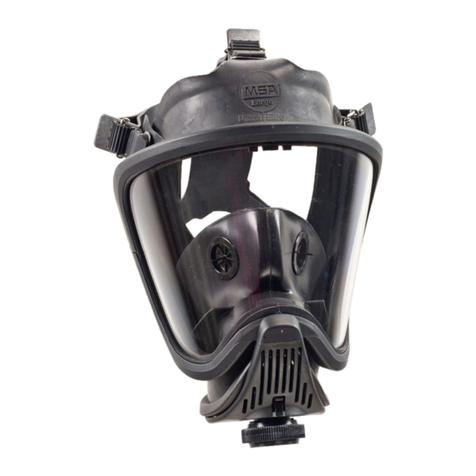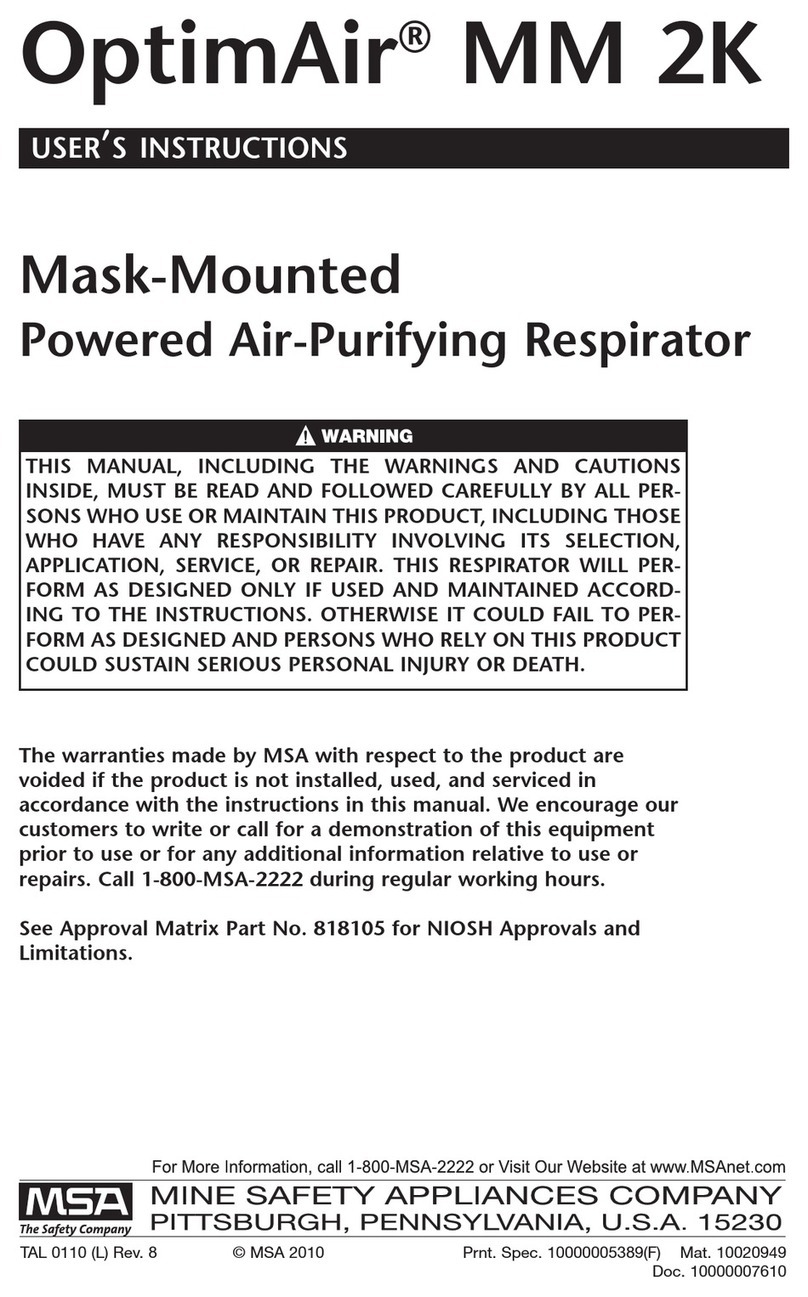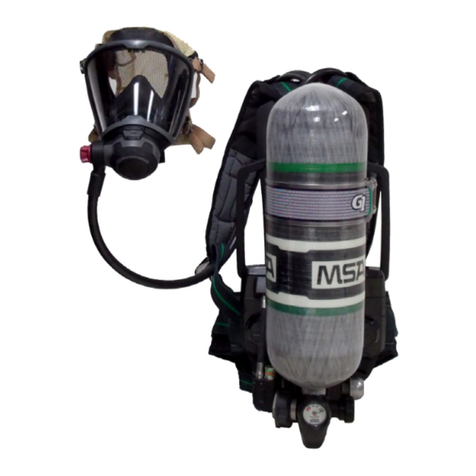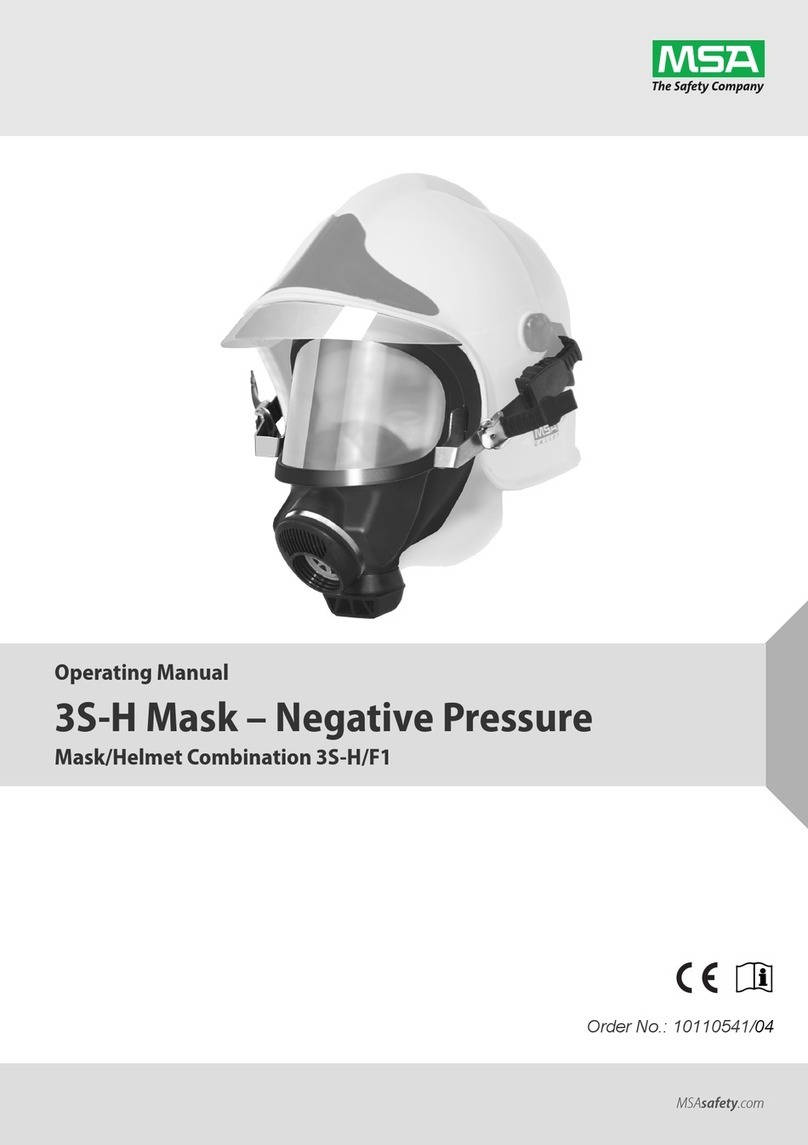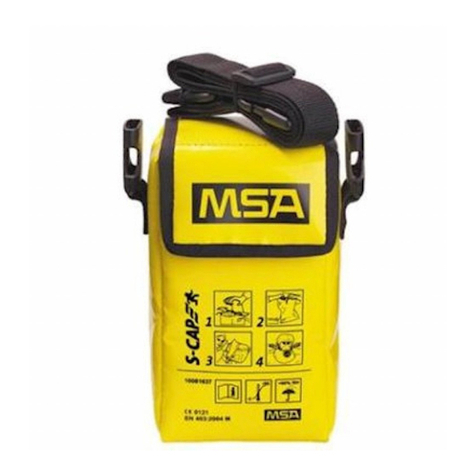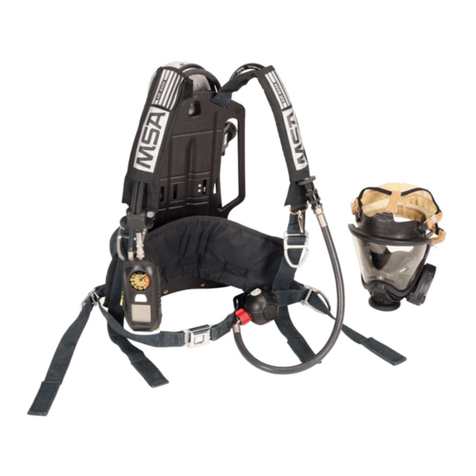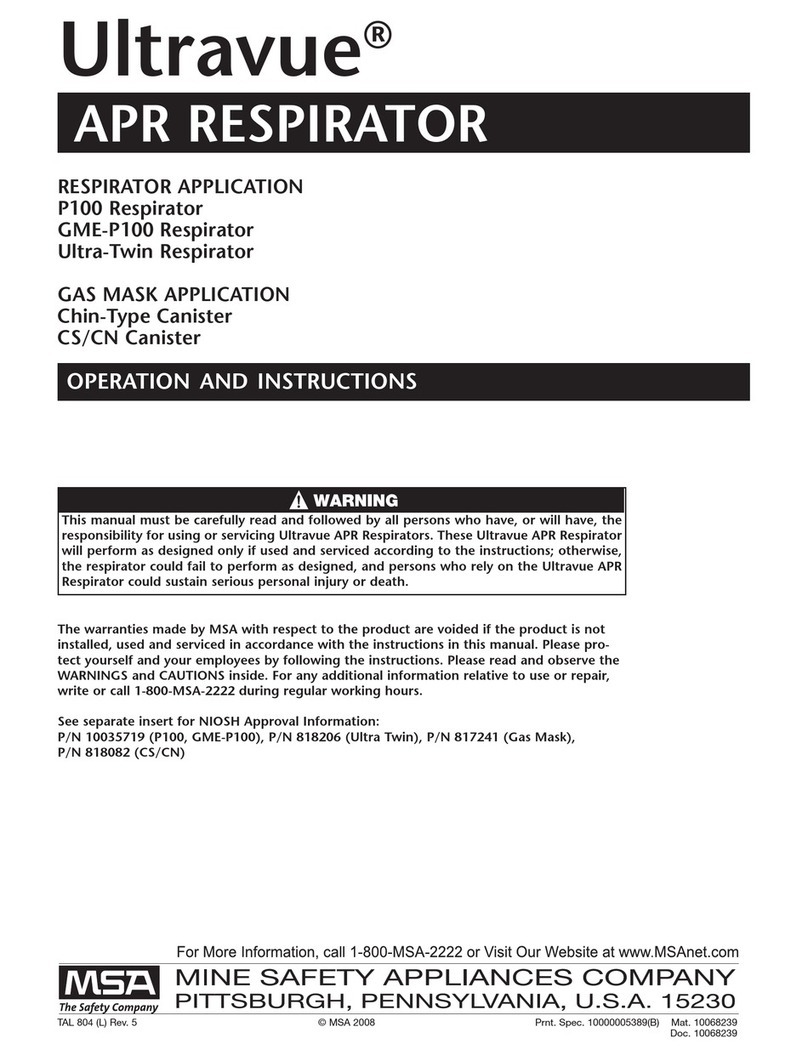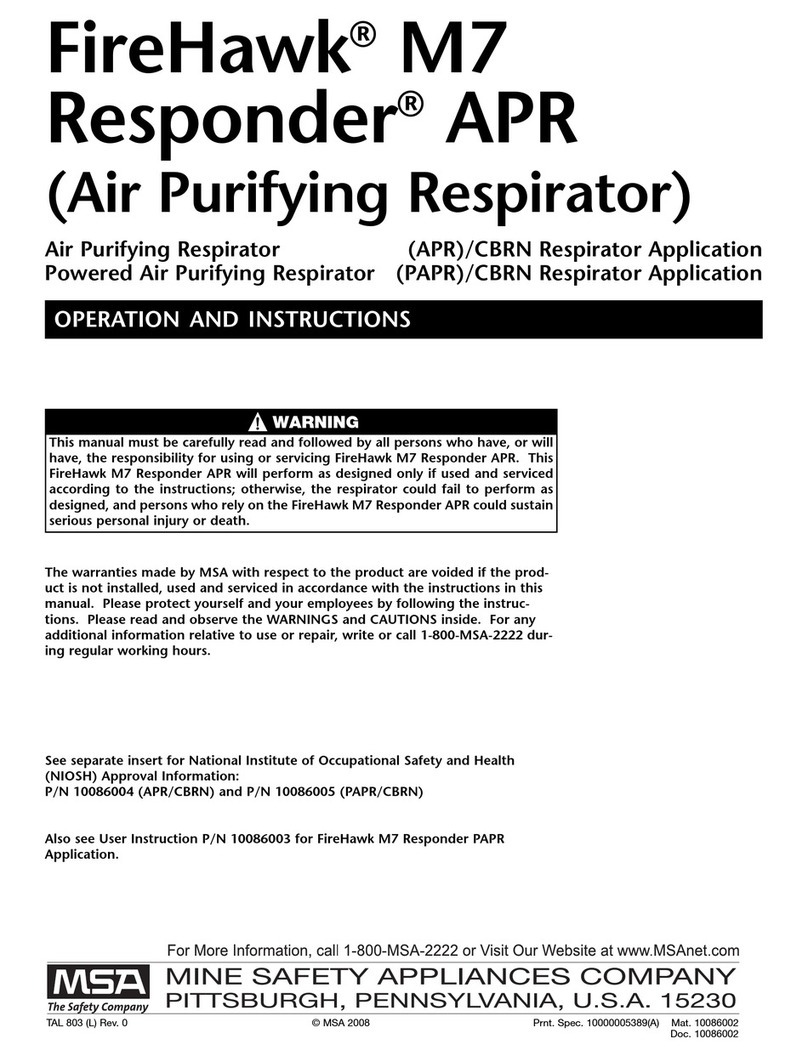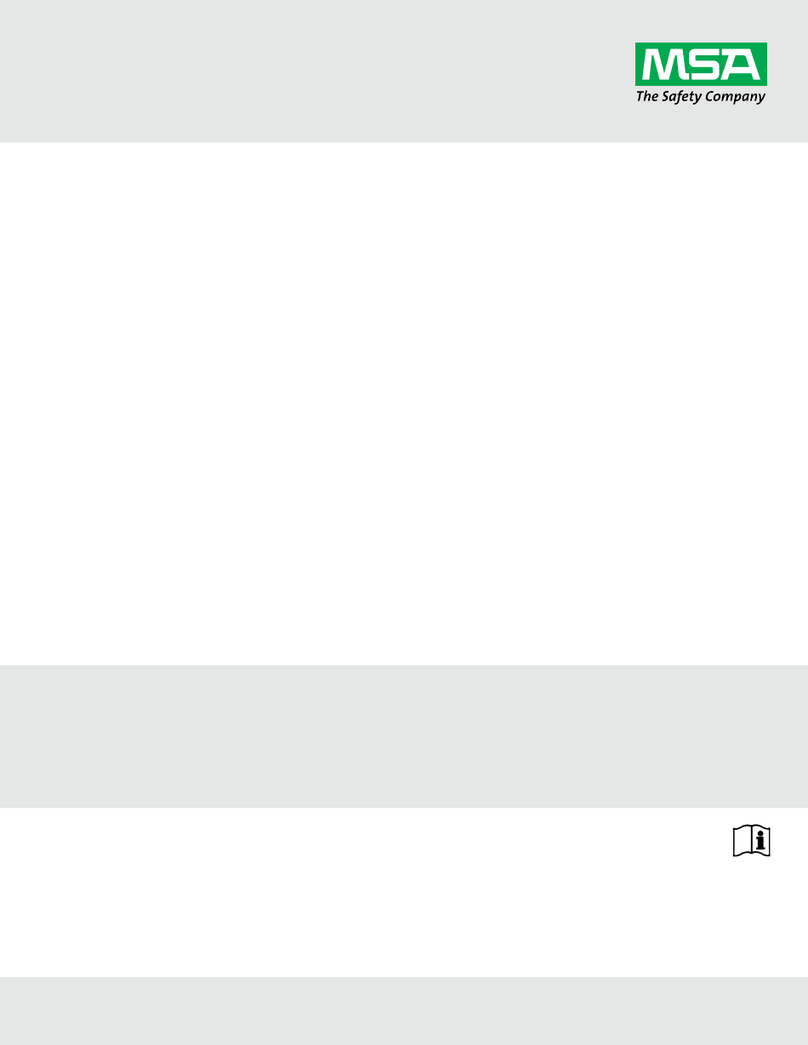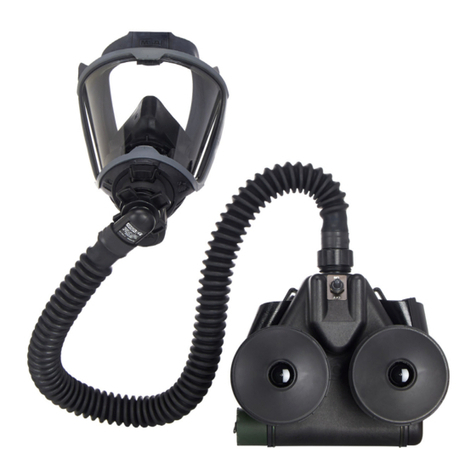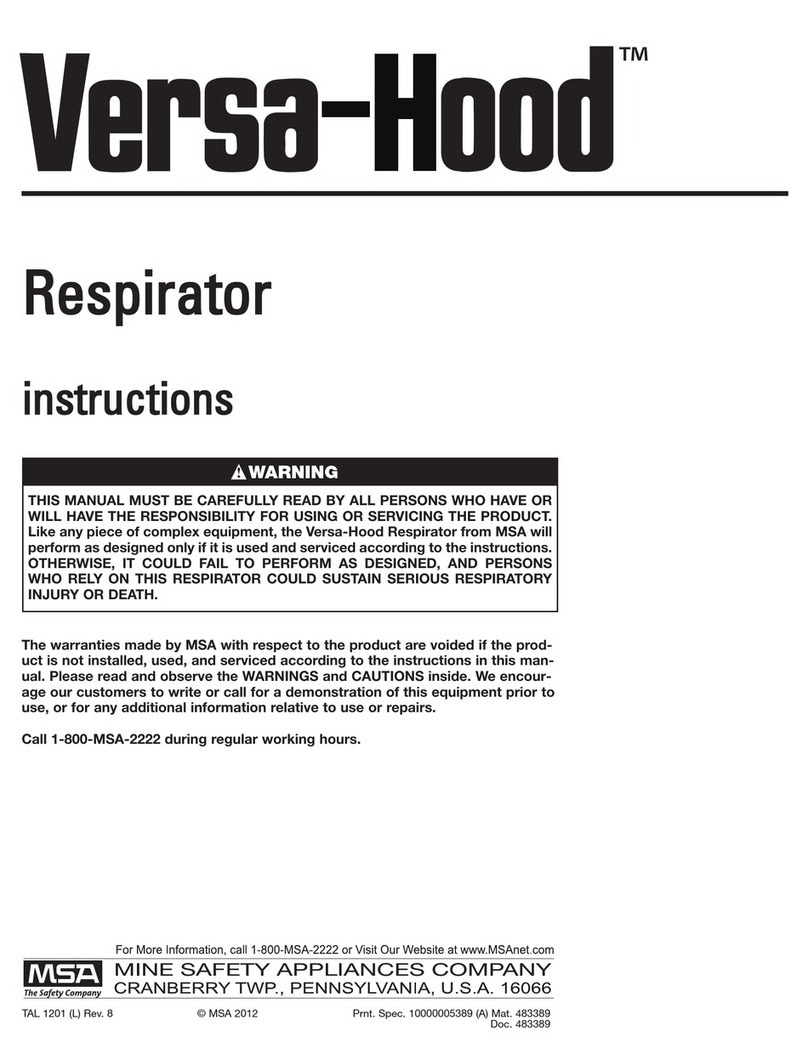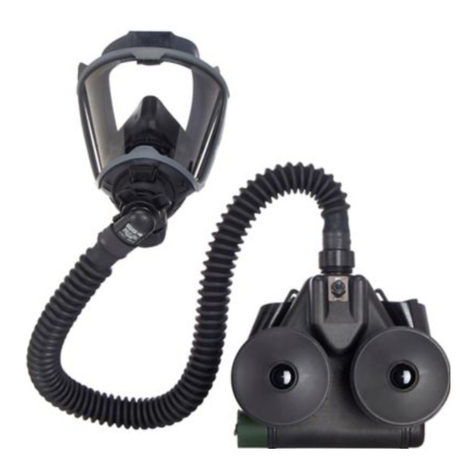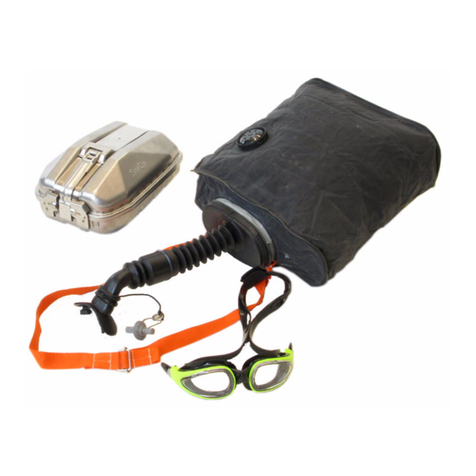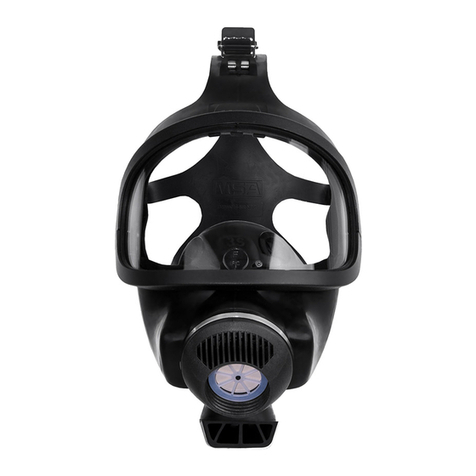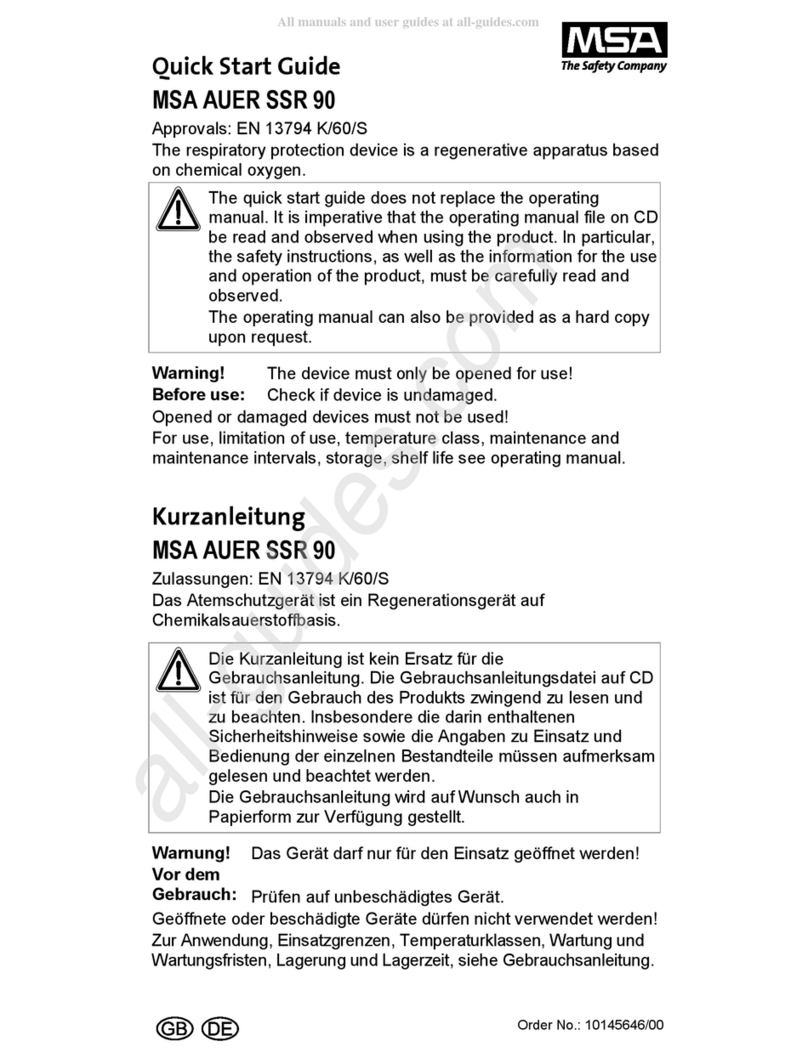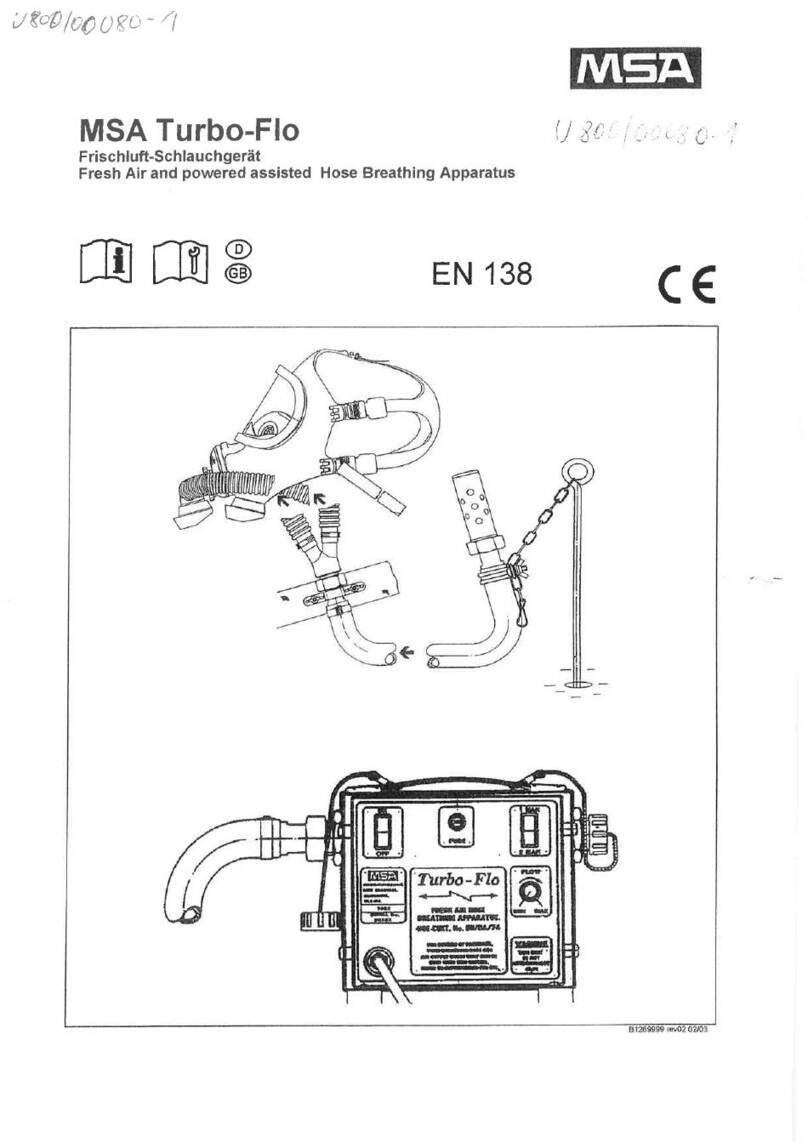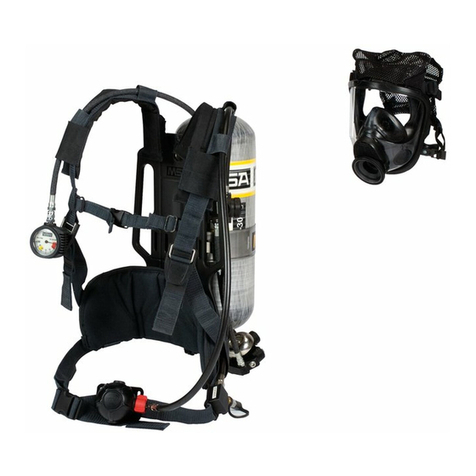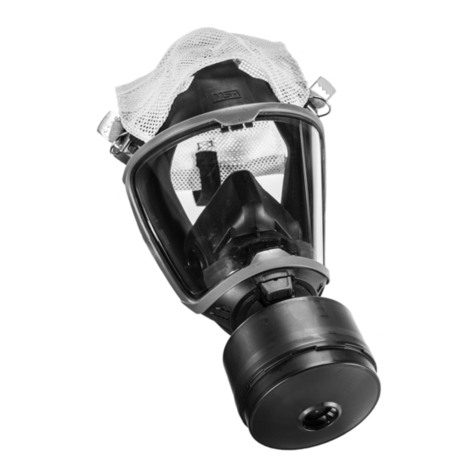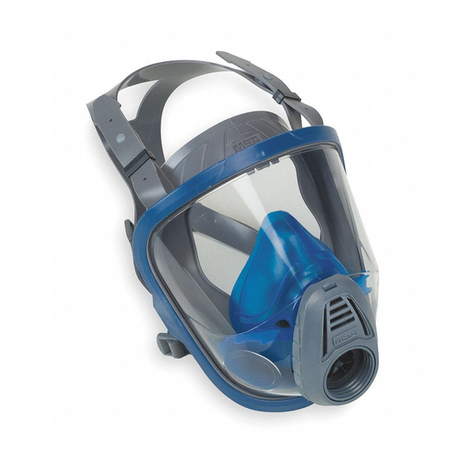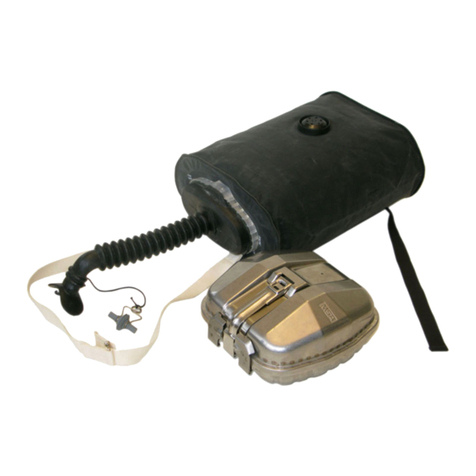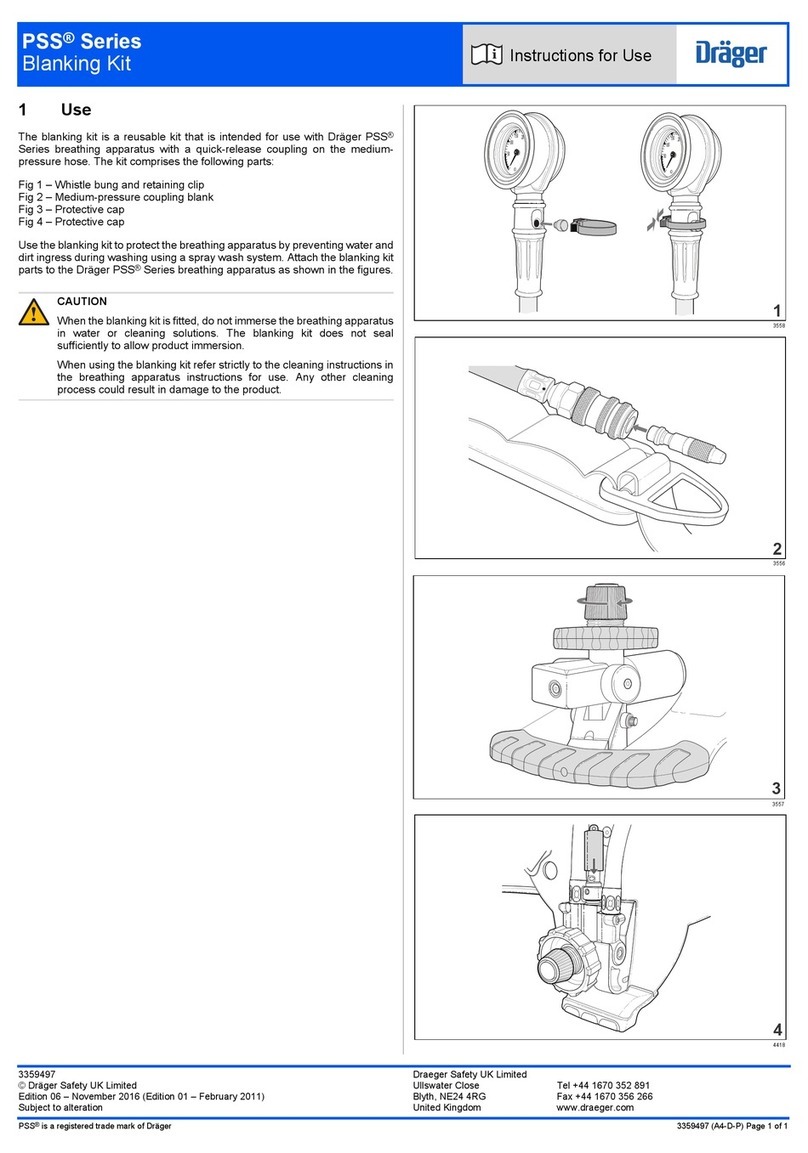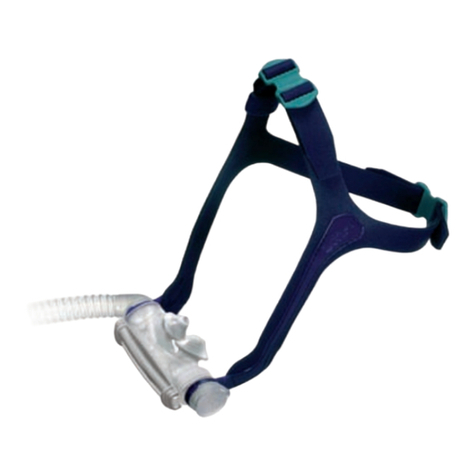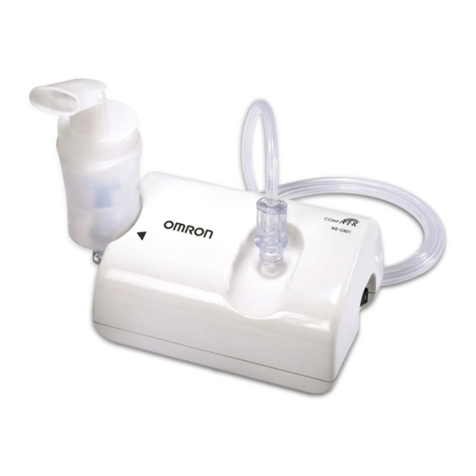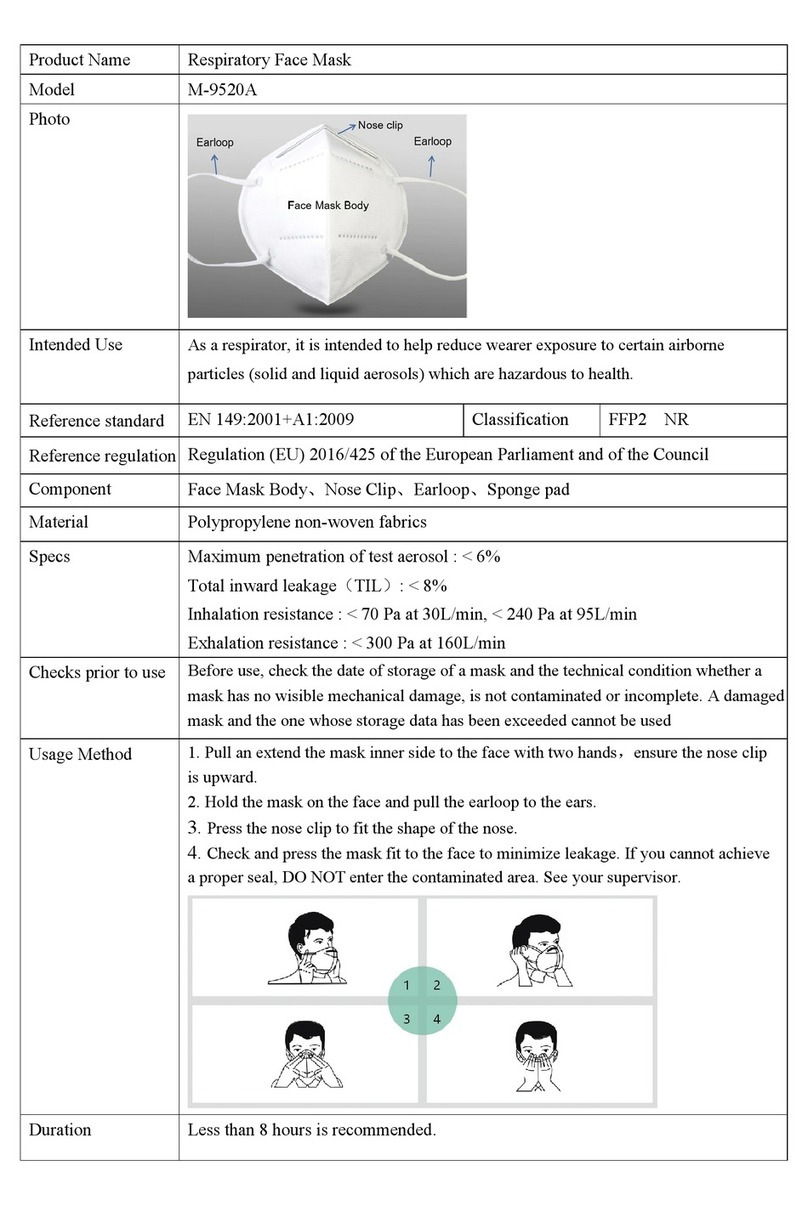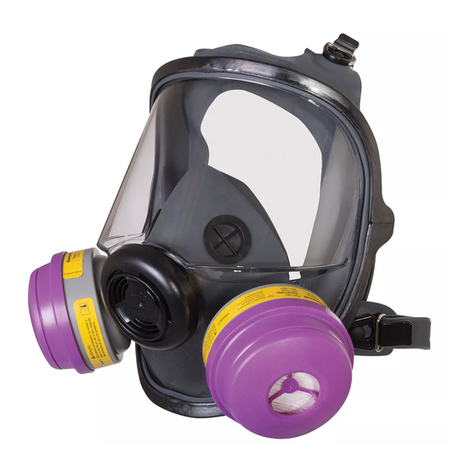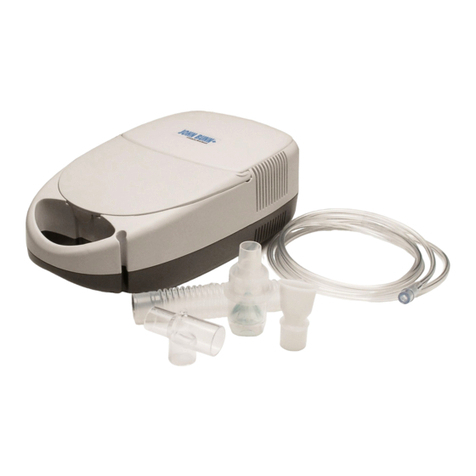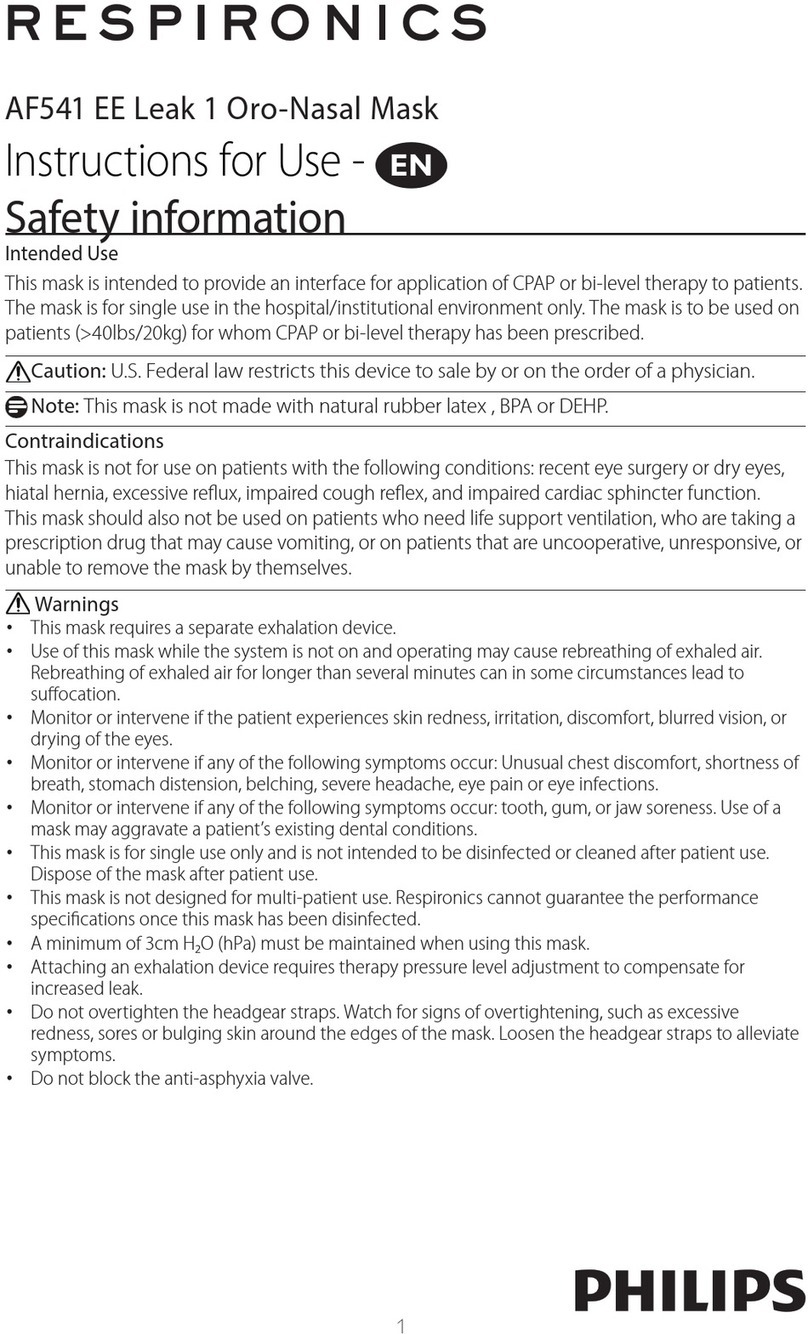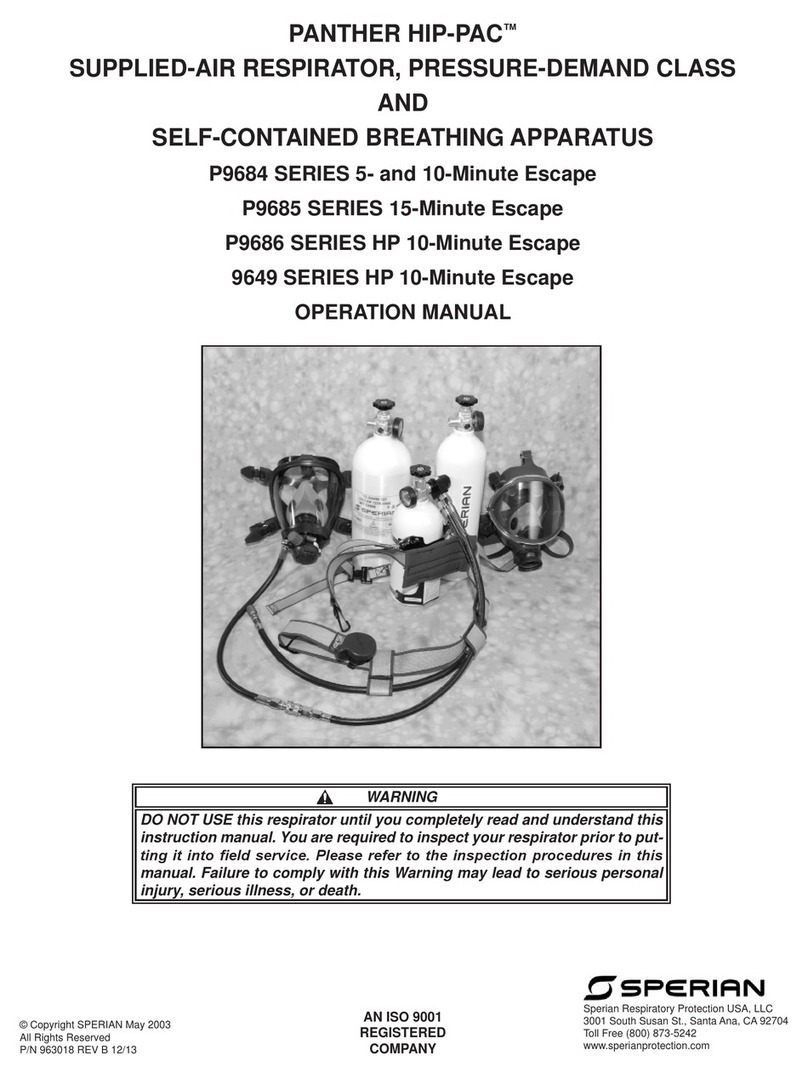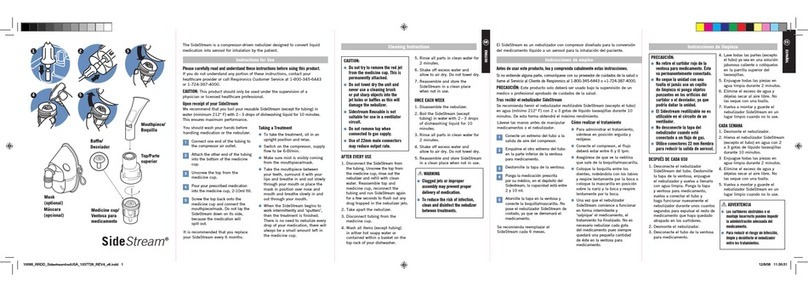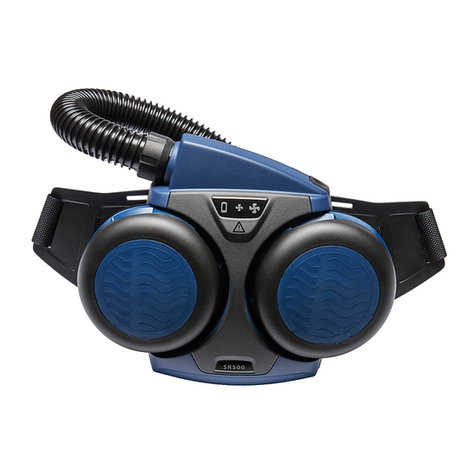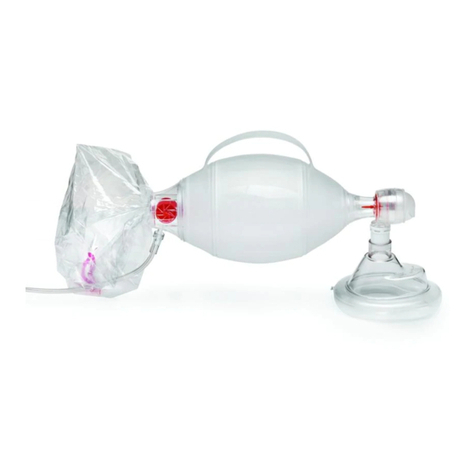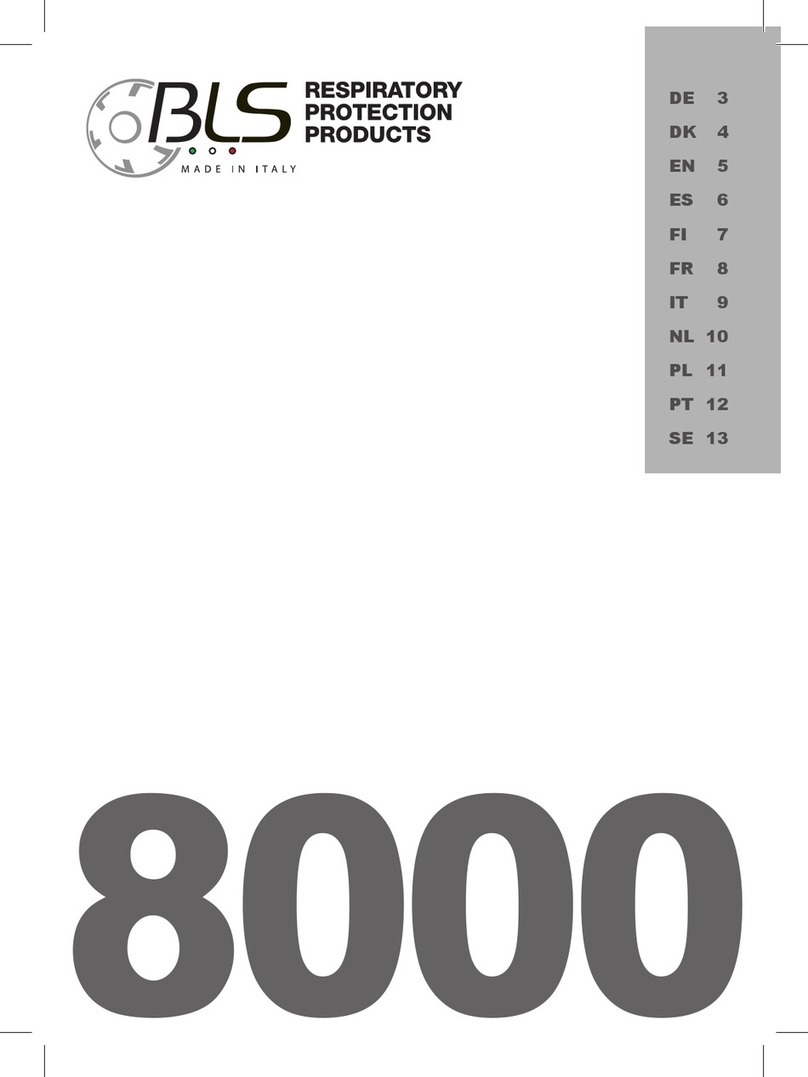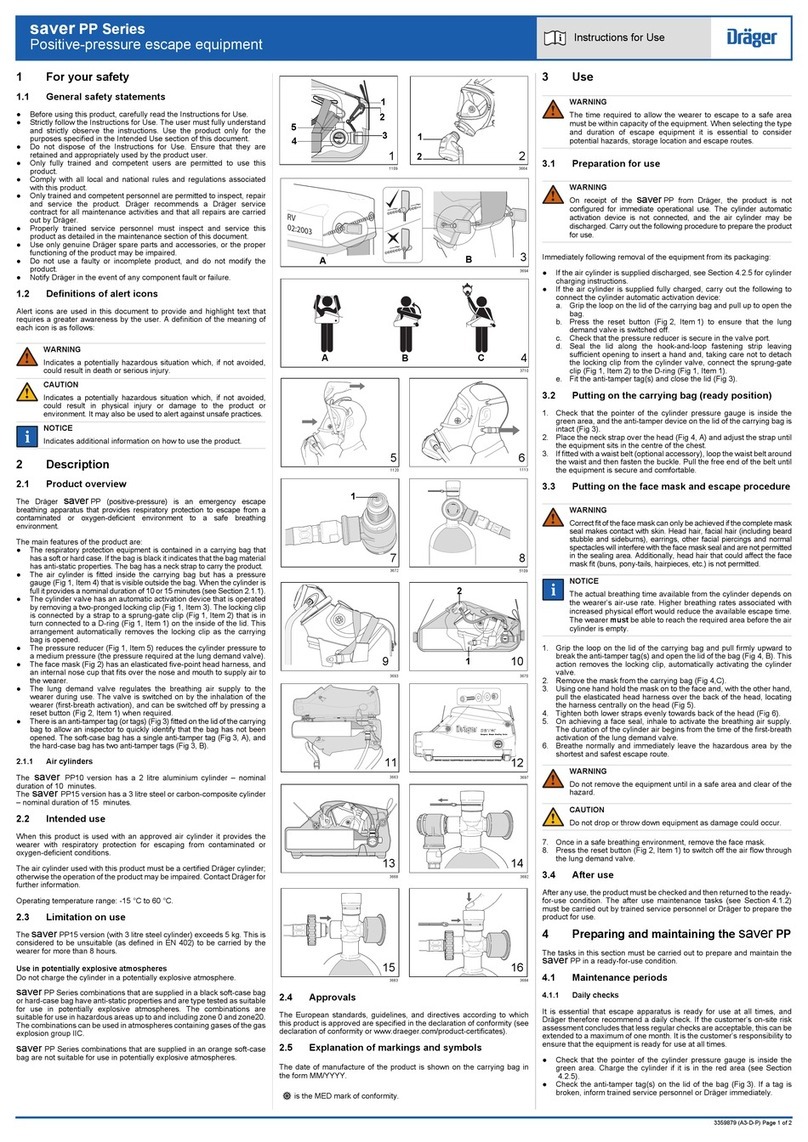
5. Leave area immediately if:
a. Breathing becomes difficult;
b. Dizziness or other distress occurs;
c. You taste or smell contaminant;
d. You experience eye, nose or throat irritation.
6. Use strictly in accordance with instructions, labels and limitations pertain-
ing to this device.
7. This respirator may not provide a satisfactory seal with certain facial char-
acteristics, such as beards or large sideburns, that prevent direct contact
between the skin and the sealing surface of the facepiece. Do not use this
facepiece if such conditions exist.
. Never alter or modify this device.
9. This respirator is for use by trained and qualified personnel only.
10. Do not use for firefighting.
11. Do not use as an underwater device.
12. Thoroughly check out the apparatus on receipt prior to use.
13. The air delivered to the air supply hose of this device must be respirable
and of a purity equal to at least Grade D Gaseous Air of Compressed Gas
Association Commodity Specification for Air. G-7.1.
14. Do not use compressed oxygen with this device.
15. Use only the listed hose lengths and air pressure range.
Failure to follow these precautions can result in serious personal injury or
death.
APPLICATION and OPERATING PRINCIPLE
The Duo-Flo Respirator is a combination air supplied respirator and air purifying
respirator. It is approved by NIOSH for use with either a particulate filter or a chin
style gas mask canister for respiratory protection against specific contaminants.
See the Approval Matrix for specific protection provided.
The air supplied mode of operation enables the user to work for long periods of time
in contaminated atmospheres without depleting the filter or canister. The air purify-
ing mode of operation can be used for entry egress and moving from station to
station in a contaminated atmosphere. It can also be used for continuous use when
an air supply is not available. The Duo-Flo Respirator is not for use in atmospheres
containing less than 19.5 percent oxygen. Also the Duo-Flo Respirator is not for
entry into immediately dangerous to life or health (IDLH) atmospheres.
Constant Flow Type (Advantage®4000, Ultravue®, and Ultra Elite®Facepieces)
— During use the air supplied mode of operation prevails as long as the user is
connected to an air source. The air purifying mode of operation is entered auto-
matically if the air-line is disconnected or if the air source is lost for any reason.
Pressure Demand Type (Ultravue and Ultra Elite Facepieces) — During use the
D/PD exhalation valve must be in the FILTER/CANISTER position when using the
respirator in the air purifying mode of operation. When the air-line is connected the
TAL 7012 (L) Rev. 2 - 818369 3
